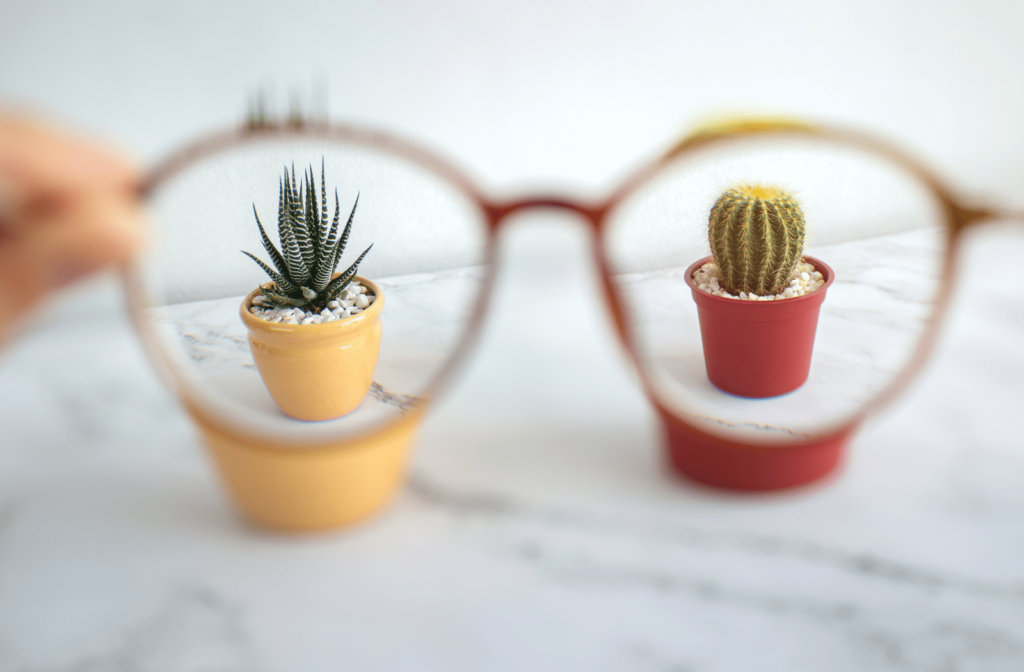Myopia (also known as nearsightedness) affects approximately 1 in 3 children in the United States, and the prevalence has increased dramatically over the last 30 years. Research shows that myopia is becoming more common largely due to an increase in near work (like computer use and reading) and a decrease in time spent outdoors.
If you have myopia, you may notice that your prescription never gets better. In fact, your prescription may get slightly worse over time. When faced with the prospect of wearing glasses for the rest of your life, you may wonder if myopia is permanent.
You may ask: is there a cure for nearsightedness?
What Is Myopia?
All parts of your eyes work together to help you see.
When an eye functions normally, the cornea and lens focus and bend (refract) light to hit your retina, a layer of light-sensitive cells at the back of your eye. Your retina then converts light into electrical signals and sends them to your brain via the optic nerve. Your brain then converts these signals into images.
An eye becomes nearsighted when it grows too long, which disrupts its ability to focus light directly on the retina. Instead, light lands in front of the retina, causing distant objects to appear blurry or out of focus.
A high degree of myopia not only causes blurry distance vision but also increases the risk of serious, sight-threatening eye diseases such as:
- Glaucoma
- Cataracts
- Retinal eye diseases
Symptoms
Nearsightedness usually develops throughout childhood and adolescence, although some injuries or medical conditions can cause it to suddenly occur in adulthood.
Symptoms of myopia include:
- Blurry or hazy vision when looking at faraway objects
- Squinting to read
- Frequent headaches
- Poor vision in low light
What Causes Myopia?
Children’s eyes change fast. When first born, babies’ eyes are short, and their eyesight is poor. But as children grow, so do their eyes, becoming longer until they reach the expected length. At this point, your child’s eyes would stop growing, and their vision would be normal. But if their eyes continue to grow, they become nearsighted.
Eye growth is rapid in early childhood and slows in adolescence when overall physical growth slows. However, the younger a child gets myopia, the greater the risk of it becoming high myopia because the eyes have a longer time to grow. Along with stronger prescription glasses, high myopia also increases eye health risks.
Why myopia occurs in some people and not others is a complicated question. It’s likely caused by different factors that vary from person to person.
Genetics
Myopia may be an inherited condition. Children with one or both parents who have myopia are more likely to get it. But children whose parents have perfect vision can also develop myopia.
Environmental Factors
Urbanization, increased near work, and less time spent outdoors can increase a child’s risk of becoming nearsighted. If a child is genetically predisposed (one or both parents have myopia), their risk is even higher.
Myopia Management Solutions
There is currently no cure for myopia. However, there are methods available that have been shown to slow myopia progression. These options include:
- Specially designed contact lenses
- Atropine eye drops
- Prescription glasses
- More time outdoors
Myopia Control Contact Lenses
MiSight
MiSight contact lenses are daily-disposable, dual-focus contact lenses that provide children with clear vision while signaling the eye to slow down its growth.
When compared to single-vision lenses, MiSight slowed myopia progression by 59%.
Orthokeratology
Orthokeratology, also known as ortho-k, is a specialty contact lens that flattens the cornea to correct vision. These lenses are worn while sleeping every night and are removed in the morning.
Ortho-k lenses only improve your vision temporarily. When they’re removed for the day, the cornea gradually returns to its original shape. However, when worn by children, ortho-k has been shown to slow myopia progression long-term.
Atropine Eye Drops
Atropine eye drops are used to dilate your pupils during an eye exam. These drops are also used for childhood myopia management.
Studies show that low-dose atropine drops given over the course of 2 to 3 years are effective at slowing myopia progression.
Prescription Eyeglasses
There’s a large selection of myopia-management eyeglasses on the market. Multifocal, bifocal, and lenses that use innovative myopia control technology have all shown various degrees of success in slowing myopia progression in children.
Spend More Time Outside
There is evidence that children who spend little time outside are more likely to develop myopia. So spending more time outside may help delay or prevent the onset of myopia.
It’s thought that the amount of ambient light the eye receives outdoors versus indoors and a certain amount of sunlight helps modulate healthy and appropriate eye development.
Start Myopia Management Today
Regular eye exams and a good eye care routine are part of taking care of your family’s vision.If your child has myopia, schedule an appointment with our 2020 Eyecare Ohio team to see if they may benefit from myopia management. Your child’s age, maturity level, and lifestyle will all play a role in determining which treatment to offer and when to start myopia management.



